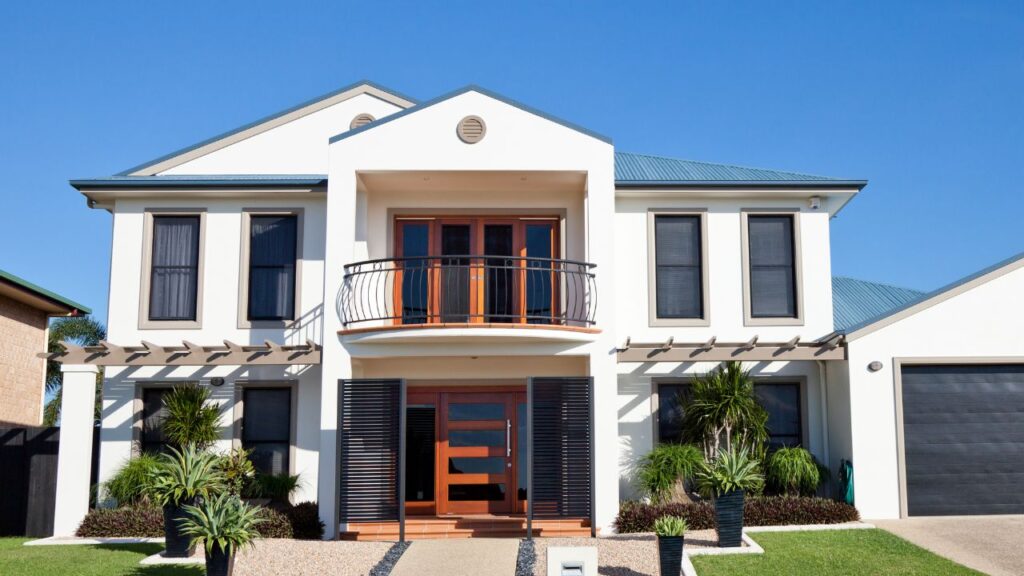In architecture and home design, the two-story house has long been a symbol of spaciousness, style, and suburban dreams. But have you ever wondered just how tall a two-story house really is? It’s a question that might not seem all that significant at first glance, but understanding the height of a two-story home can provide valuable insights into these dwellings’ design, functionality, and aesthetics.
In this blog, we embark on a journey to demystify the heights of two-story houses. We’ll delve into the various factors that influence their vertical dimensions, uncover the secrets behind their varying sizes, and explore how these dimensions impact our living spaces. Whether you’re a homeowner, a prospective homebuyer, or just someone with a curiosity for all things architectural, this exploration into the heights of two-story houses promises to unveil a world of fascinating insights. So, let’s step back and look to discover these iconic structures’ sizes.
Understanding Two-Story House Design
Two-story house design involves:
- The meticulous planning and arrangement of living spaces across two distinct levels.
- Offering a blend of functionality.
- Aesthetics.
- Spatial efficiency.
This architectural approach maximizes the use of available land while allowing for versatile room distribution. The ground floor typically houses communal areas like the living room, kitchen, and dining space, promoting easy access and interaction. Meanwhile, the upper floor commonly accommodates private spaces such as bedrooms and possibly a home office or study. Efficient circulation, proper structural support, and a coherent design theme are essential to crafting an effective two-story house design. This style of architectural layout not only offers a solution to space limitations but also presents an opportunity for creative design elements that enhance the overall living experience.

Measuring the Average Height of Two-Story Homes
Measuring the average height of two-story homes involves a comprehensive assessment of residential structures to determine the typical vertical extent of such dwellings. This process requires precision in data collection, as it encompasses the vertical distance from the foundation to the roof’s apex. The methodology involves:
- Selecting a representative sample of two-story houses.
- Employing accurate measurement tools like laser distance meters or total stations.
- Capturing data points from various points on each structure.
A reliable approximation of the average height of two-story homes can be derived by averaging these measurements. This information holds significance for urban planning, architectural design, and construction practices, contributing to a deeper understanding of housing trends and requirements.
Ceiling Height
The ceiling height in a two-story house typically ranges from 8 to 10 feet (2.4 to 3 meters) on the ground floor and slightly less on the upper floor. This range allows for comfortable and aesthetically pleasing living spaces. Taller ceiling heights can create a sense of openness and grandeur, while slightly lower ceilings on the upper floor help maintain a cozy atmosphere. However, ceiling heights can vary based on architectural design, local building codes, and personal preferences. It’s essential to balance functionality and visual appeal when determining the ceiling height for each level of a two-story house.
Attic Space
Attic spaces often hold a certain mystique, tucked away beneath the sloping eaves of a roof, hidden from the daily bustle of a home. These unique spaces can vary widely in size and purpose, but they all share a common trait: they occupy the uppermost part of a house, just beneath the roof. The height of an attic space depends on the architectural design and construction of the house itself. In a typical two-story house, the attic space typically spans the entire footprint of the home, with its height determined by the roof’s pitch.
The size can range from a cozy, low-ceilinged nook suitable for storage or a small workspace to a more expansive and lofty area, often used for additional bedrooms, recreational rooms, or a serene retreat with ample headroom. Ultimately, the height of an attic space is a unique feature that adds character and versatility to a home’s design.
Other Factors that Affect the Building’s Height
Other factors that affect a building’s height extend beyond just the number of stories it contains. While a two-story house typically has two above-ground levels, local zoning regulations, architectural design, and geographical location can significantly influence a building’s overall height. Zoning codes in a specific area may restrict building height to maintain a uniform neighborhood aesthetic or ensure safety. Architectural features like high ceilings or rooftop structures can also add to a building’s height. Furthermore, the local geography and topography, including elevation and ground conditions, can impact a building’s perceived size. Thus, the height of a two-story house can vary based on these multifaceted factors, illustrating the complex interplay between design, regulations, and location in determining a building’s ultimate stature.
Roof Type
One popular choice is the gable roof, which features two sloping sides that meet at a central ridge. This classic design adds visual interest to your home and allows for increased attic space and improved ventilation. Another excellent option is the hip roof, renowned for its durability and resistance to strong winds. The four sloping sides of a hip roof make it an ideal choice for areas prone to hurricanes or heavy storms.
For those seeking a more unconventional look, why not explore the world of flat roofs? While some might view them as purely modern aesthetics, they offer many practical advantages. Flat roofs can provide an additional outdoor living space with rooftop gardens or terraces. Moreover, their minimalist design can let you experiment with solar panels and rainwater harvesting systems effortlessly. Embracing energy-efficient technologies while adding luxurious touches? That’s definitely worth considering!
Roof Style and Pitch
One popular roof style for two-story houses is the gable roof, characterized by its triangular shape formed by two sloping sides. Not only does this simple yet elegant design contribute to a classic look, but it also allows for better drainage during heavy rains or snowfall. Additionally, the steep slope of gable roofs provides ample space in the attic area, allowing for potential expansion or storage. Another suitable option worth considering is the hip roof style.
Compared to gable roofs, hip roofs have four sloping sides that meet at a ridge line. This design offers enhanced stability and durability against strong winds and harsh weather conditions since all four sides evenly distribute weight downwards. Moreover, hip roofs are known for their versatility, as they can incorporate dormers or additional extensions without compromising their visual coherence.
Height of the foundation
This fundamental aspect of construction determines the entire tower’s stability, longevity, and safety. The local geological conditions primarily dictate the foundation’s height, the type of soil present, and the specific load-bearing requirements of the building. A well-calculated foundation height ensures the structure is adequately supported and protected from potential issues such as soil settlement, water infiltration, or seismic activity.
Moreover, it is pivotal in ensuring the building meets local building codes and regulations, promoting structural integrity and occupant safety. Therefore, the height of the foundation must be meticulously determined through geological assessments and engineering calculations to guarantee the success of any construction project.
Floor thickness
The floor thickness in a two-story house can vary depending on several factors, including construction materials and local building codes. Typically, the floor thickness for each story in a residential building ranges from 8 to 12 inches, with variations due to factors like the type of flooring used and the structural design. Generally, a two-story house can have an overall height ranging from 18 to 25 feet, considering an average floor-to-ceiling size of 9 to 12 feet per story. However, it’s essential to note that these measurements can change significantly based on architectural preferences and regional regulations. Therefore, when planning the construction of a two-story house, it’s crucial to consult with a qualified architect or builder to ensure compliance with local building codes and to achieve the desired aesthetics and functionality.
Why You Need a Two-Story House
A two-story house offers many benefits, making it a compelling choice for homeowners. Firstly, it provides ample living space without requiring a sprawling footprint, making it an ideal option for those with limited land or those who wish to maximize their yard space. Separating living and sleeping areas on different levels promotes privacy and tranquillity, as family members can retreat to their floors when needed. Two-story homes often have an aesthetically pleasing exterior, providing architectural interest and curb appeal.
They are also energy-efficient, as heat tends to rise, making it easier to maintain comfortable temperatures on both levels. Lastly, a second story opens up the possibility for breathtaking views, whether you’re overlooking a scenic landscape or simply your own well-maintained garden. In summary, a two-story house offers a practical and versatile living solution catering to functionality and aesthetics.
Final Word
In conclusion, the heights of two-story houses can vary significantly based on many factors, from architectural style to local building codes. While there is no one-size-fits-all answer to how tall a two-story home is, we expect it to range between 20 and 25 feet tall. However, it’s important to remember that these figures are not set in stone, and the actual height of a two-story house may deviate from this range. Therefore, when considering the construction or renovation of a two-story home, it’s crucial to consult local regulations, architectural plans, and the specific design of the house to gain a precise understanding of its proper height. Ultimately, the allure of two-story homes lies in their height and their possibilities for functional and aesthetic customization.












Commented Posts